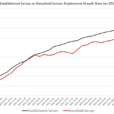We got a major short-term knee-jerk on the pair upon French Election results. But what about EURUSD long-term analysis? What can you expect in the coming months, especially if you are a medium to the long-term investor? Here is a quick IDDA update to figure it all out.
1- Fundamental Points
French Elections: It was a battle between populist candidate Marine Le Pen and the exact opposite, Emmanuel Macron. Le Pen is the head of a far-right party once known for being anti-Semitic and racist. She’s run an anti-immigrant and anti-EU campaign. Populism: when voters aim to take their government back from the ‘out-of-touch elites’ in charge. Similar to what happened with Brexit, and President Trump’s victory in the US election. In France, a tired economy, terror attacks, and the migrant and refugee crisis have left people frustrated. Everyone was wondering if they’ll hop on the populism train too. But turns out the French might have learned a thing or two from history.
EU Economy: The Euro Zone’s GDP grew by 1.7% year-on-year in Q4 2016. That is just a tad slower compared to Q3’s +1.8%. The European Central Bank (ECB) expects GDP to grow at an annual pace of 1.8% by the end of 2017. However, the available economic data are painting a mixed picture for Q1 2017. The PMI readings, on the other hand, have been trending higher. That’s a good thing. As for the labor market, the ECB forecasts that the jobless rate would fall to 9.4% by the end of the year. And as of February, the jobless rate was already at 9.5%. Looking at individual EU members, some of them are not doing so well. But EU as a whole appears to be moving closer to the ECB’s 2017 forecasts. In which case, EUR crosses could get stronger. And perhaps, the EURUSD long-term analysis would be pushed to the north. Coming up: Second round of French elections ahead of us on May 7th. This brings us to the second point of IDDA for EURUSD long term analysis: Technical.













Leave A Comment